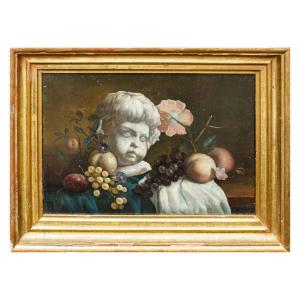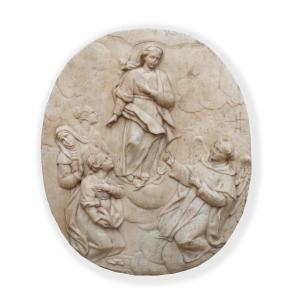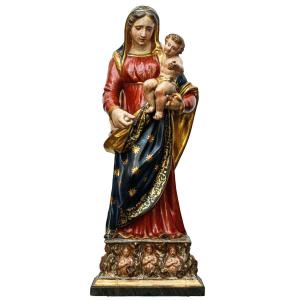Pastoral scene
Oil on board, 44.5 x 36 cm
The Da Ponte are commonly known as Bassano, from the name of their city of origin, Bassano del Grappa: this conventional name was fixed by art critics during the modern age. The Da Ponte was a family-run business before the letter, active for about a century and a half. Initiated by Francesco il Vecchio, in the first years of the sixteenth century, achieved great appreciation throughout northern Italy with the personality of Jacopo, starting from the second half of the fourth decade assisted by the brothers Giambattista and Gianfrancesco. After him, his sons Francesco il Giovane, Giambattista, Leandro and Gerolamo will be the interpreters of the family tradition. The successors of Jacopo used to take over the iconographic schemes and technical devices of the master, giving rise to numerous versions of his paintings more known and commercially successful. The painting presents the typical characters of style of the Bassano but intrigues that, in some of the most illustrious monographs dedicated to the family of painters, first among all that of Edoardo Arslan, there is not recorded a similar composition between the works of Jacopo. It is in fact known how the workshop has been prolific in reiterating with minimal variations the proven iconographies of his father and that the same have been used by the students. The analysis of the canvas in question thus registers its own compositional autonomy and by observing the drafts and the typology of faces, one recognizes the characteristic pictorial conduction of Gerolamo da Ponte, Jacopo’s last son who ran the important workshop with his brother Giambattista during the first two decades of the seventeenth century. The last of Jacopo’s children, Gerolamo da Ponte was born in Bassano on 3 June 1566. Student and imitator of his father, he carried out an intense activity of copyist.










































 Le Magazine de PROANTIC
Le Magazine de PROANTIC TRÉSORS Magazine
TRÉSORS Magazine Rivista Artiquariato
Rivista Artiquariato